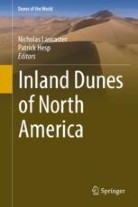
About this book series
Sand dune systems of Quaternary age occur on all continents and at all latitudes and comprise coastal dunes and inland or continental dunes. Coastal dunes are best developed along windward coasts, where sand sized sediment is abundant. Inland dunes occur primarily in low- and mid-latitude arid and semi-arid regions, although there are many examples of cold climate dune systems. Inland dune systems are sensitive to the effects of anthropogenic disturbance (grazing, agriculture, off-road vehicles), as well as climate change and variability (drought cycles). Coastal dunes are impacted by coastal development, storms, and sea level change.
Aims & Scope
This series of volumes is intended to provide students and professionals in earth and environmental sciences with an overview of major coastal and inland dune fields. Information will facilitate decision-making and environmental management. The volumes will be regionally-based and will provide up to date information and reviews of dune field characteristics (morphology, vegetation, sediments), sediment sources, dune field history and response to climate and sea level change past, present and future. Volumes may also provide information on dune (field) processes; relations between geomorphology and ecosystem processes (e.g. dune vegetation and its effects on sediment transport and erosion and deposition patterns); dune flora and fauna; habitat restoration etc.Series editors
Nicholas Lancaster, Desert Research Institute, Reno,Nevada,
USA.
- Electronic ISSN
- 2509-7814
- Print ISSN
- 2509-7806
- Series Editor
-
- Nicholas Lancaster,
- Patrick Hesp
